 By Buddy T
By Buddy T
Buddy T is an anonymous writer and founding member of the Online Al-Anon Outreach Committee with decades of experience writing about alcoholism.
Alcohol and drug abuse by employees cause many expensive problems for business and industry ranging from lost productivity, injuries, and an increase in health insurance claims. The loss to companies in the United States due to alcohol and drug-related abuse by employees totals $100 billion a year, according to the National Clearinghouse for Alcohol and Drug Information (NCADI).
These staggering numbers do not include the cost of diverting company resources, that could be used for other purposes, toward addressing substance abuse issues. Nor does it include the “pain and suffering” aspects, which cannot be measured in economic terms.
Measuring the Costs
However, costs to businesses can be measured at the expense of absenteeism, injuries, health insurance claims, loss of productivity, employee morale, theft, and fatalities.
Impact of Drug and Alcohol Abuse
According to NCADI statistics, alcohol and drug users:
- Are far less productive.
- Use three times as many sick days.
- Are more likely to injure themselves or someone else.
- Are five times more likely to file a worker’s compensation claim.
One survey found that nine percent of heavy drinkers and 10 percent of drug users had missed work because of a hangover, six percent had gone to work high or drunk in the past year, and 11 percent of heavy drinkers and 18 percent of drug users had skipped work in the past month.
Contributing Factors
Research has shown that several factors can contribute to alcohol and drug misuse in the workplace. Factors that can encourage or discourage workplace substance abuse include:
- Workplace culture and acceptance of misuse of substances
- Workplace alienation
- Availability of alcohol and drugs
- Existence and enforcement of workplace substance abuse policies
Workplace Culture
The culture of the workplace can play a large role in whether drinking and drug use are accepted and encouraged or discouraged and inhibited. Part of this culture can depend on the gender mix of employees.
In predominantly female occupations research shows that both male and female employees are less likely to have substance abuse problems compared to employees of both genders in male-dominated occupations.
Studies have found that male-dominated occupations create heavy drinking cultures in which employees drink to build solidarity and show conformity. Therefore, these occupations have higher rates of alcohol- and drug-related problems.
Any industry or organization can be affected by workplace alcoholism, but research shows it is prevalent in these industries: food service, construction, mining and drilling, excavation, installation, maintenance, and repair.
How the Effects of Alcoholism Differ in Men
Workplace Alienation
Research shows that the job itself can contribute to higher rates of employee substance abuse. Work that is boring, stressful or isolating can contribute to employees’ drinking.
Employee substance abuse has been linked to low job autonomy, lack of job complexity, lack of control over work conditions and products, boredom, sexual harassment, verbal and physical aggression, and disrespectful behavior.
Alcohol Availability
The availability and accessibility of alcohol can influence employee drinking. More than two-thirds of the 984 workers surveyed at a large manufacturing plant said it was “easy” or “very easy” to bring alcohol into the workplace, to drink at workstations, and to drink during breaks.
In cultures where alcohol is prohibited, drinking on the job and drinking, in general, is decreased significantly.
Supervision
The level of supervision on the job can affect drinking and drug misuse at work rates. A study of evening shift workers, when supervision was reduced, found that employees were more likely to drink at work than highly supervised shifts.
Casual Drinkers Are a Problem, Too
Remarkably, research shows it is the social drinkers, not the people with alcohol dependence or problem drinkers, who are responsible for most of the lost productivity, according to a Christian Science Monitor article, specifically tying the hangover issue to production in the workplace
This study also found that it was managers, not hourly employees, who were most often drinking during the workday. And 21% of employees said their own productivity had been affected because of a co-worker’s drinking
Twenty-three percent of upper managers and 11 percent of first-line supervisors reported having a drink during the workday, compared with only 8 percent of hourly employees.
Prevention Works
When the issue of workplace substance abuse is addressed by establishing comprehensive programs, it is a “win-win” situation for both employers and employees, according to the U.S. Department of Labor.
A study of the economic impact of substance abuse treatment in Ohio found significant improvements in job-related performance:
- 91% decrease in absenteeism
- 88% decrease in problems with supervisors
- 93% decrease in mistakes in work
- 97% decrease in on-the-job injuries
Companies and employers, large and small, can adopt a workplace substance abuse policy that will reduce the loss of productivity and provide a safer work environment for all.
Workplace Drug Testing and Meeting the Legal Guidelines
Article Sources
Verywell Mind uses only high-quality sources, including peer-reviewed studies, to support the facts within our articles. Read our editorial process to learn more about how we fact-check and keep our content accurate, reliable, and trustworthy.
- Goplerud E, Hodge S, Benham T. A Substance Use Cost Calculator for US Employers With an Emphasis on Prescription Pain Medication Misuse. J Occup Environ Med. 2017;59(11):1063-1071. doi:10.1097/JOM.0000000000001157
- Ames GM, Bennett JB. Prevention interventions of alcohol problems in the workplace. Alcohol Res Health. 2011;34(2):175-87
- Edvardsen HM, Moan IS, Christophersen AS, Gjerde H. Use of alcohol and drugs by employees in selected business areas in Norway: a study using oral fluid testing and questionnaires. J Occup Med Toxicol. 2015;10:46. doi:10.1186/s12995-015-0087-0
- Frone MR, Brown AL. Workplace substance-use norms as predictors of employee substance use and impairment: a survey of U.S. workers. J Stud Alcohol Drugs. 2010;71(4):526-34. doi:10.15288/jsad.2010.71.526
- Roman PM, Blum TC. The workplace and alcohol problem prevention. Alcohol Res Health. 2002;26(1):49-57
- Svare GM, Miller L, Ames G. Social climate and workplace drinking among women in a male-dominated occupation. Addict Behav. 2004;29(8):1691-8. doi:10.1016/j.addbeh.2004.03.033
- French MT, Maclean JC, Sindelar JL, Fang H. The morning after: alcohol misuse and employment problems. Appl Econ. 2011;43(21):2705-2720
- Duke MR, Ames GM, Moore RS, Cunradi CB. Divergent Drinking Patterns of Restaurant Workers: The Influence of Social Networks and Job Position. J Workplace Behav Health. 2013;28(1):30-45. doi:10.1080/15555240.2013.755447
- Tynan RJ, Considine R, Wiggers J, et al. Alcohol consumption in the Australian coal mining industry. Occup Environ Med. 2017;74(4):259-267. doi:10.1136/oemed-2016-103602
- Frone MR. Work Stress and Alcohol Use: Developing and Testing a Biphasic Self-Medication Model. Work Stress. 2016;30(4):374-394. doi: 10.1080/02678373.2016.1252971
- Zink N, Bensmann W, Beste C, Stock AK. Alcohol Hangover Increases Conflict Load via Faster Processing of Subliminal Information. Front Hum Neurosci. 2018;12:316. doi:10.3389/fnhum.2018.00316
Additional Reading
Wilcox S. Drugs and Alcohol in the Workplace. National Council on Alcoholism and Drug Dependence.






